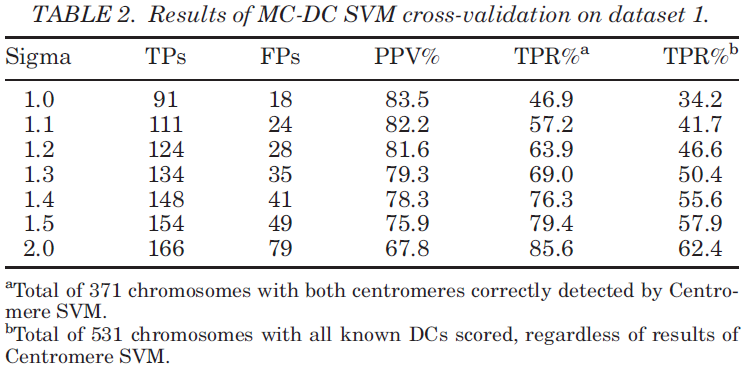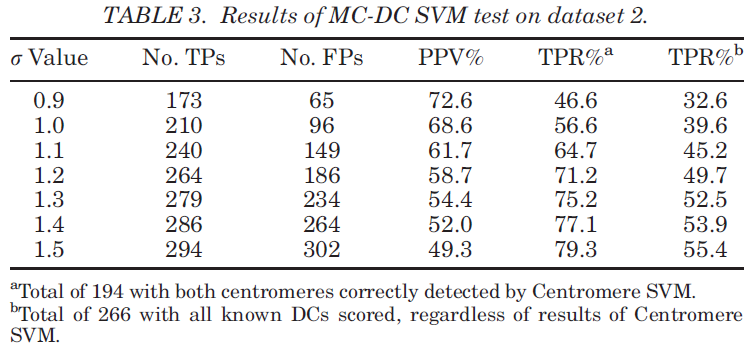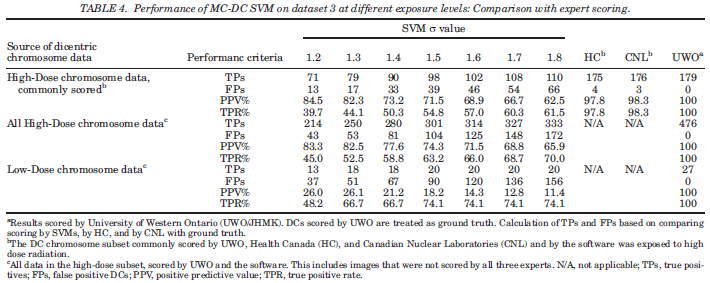SVM sigma value
The SVM sigma value, referred to as “σ”, is an SVM tuning parameter and effectively represents a tradeoff between increased sensitivity and reduced specificity in dicentric chromosome (DC) detection. Simply put, a higher SVM sigma value will generally find more dicentric chromosomes but will result in more false positives (FPs). A lower SVM sigma value will generally result in a lower FP rate but may miss true positives (TPs). This trade-off is depicted in the image below.

The indented text and tables in this page are taken from Li et al. 2016 1) and modified slightly for wording and term definition only. More information about SVM sigma values can be found in the cited paper.
There is a tradeoff between tuning the SVM to maximize either true positive rates (TPR) or positive predictive values (PPV) but not both. Increasing σ improves sensitivity, i.e., more positive predictions of DCs, but reduces specificity. However, the numbers of monocentric chromosomes (MCs) will always exceed DCs, regardless of radiation exposure. For this reason, the SVMs have been optimized to maximize correct detection of TP. σ values from 1.4 to 1.6 result in a balance of TPs and FPs and maximize PPV and TPR. At high doses, at least, these sigma values provide satisfactory accuracy for differentiating MCs from DCs, though manual review by experts is more accurate when scoring is consistent.
The tables below show the TPs, FPs, PPV, TPR in three datasets at a variant of σ values.



